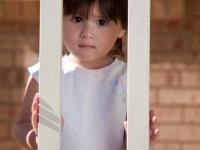How To Ensure Child Safety In Balustrades Design

Before we get into design and child safety, it is important to first understand what a balustrade actually is. Basically, it is a repeating set of balusters (or posts) that support a railing. Whilst they are most commonly used on staircases, they are also found on balconies, verandahs and open decks. Their main purpose is to provide safety, so that people won’t fall over the edge, but they are also used to define and outline a space. So, how can we ensure child safety in our balustrades design without compromising on aesthetics?
Even though adults are well aware that balustrades are present for safety and that they should not, under any circumstances, test their limits, children are a whole other matter entirely. This is why it is essential that all balustrade designs is properly maintained (including periodic safety inspections), as it will ensure that none of the balusters have come loose or that other structural issues have arisen. At the end of the day, it is just not worth risking your children’s safety.
bal·us·trade
bal??str?d/Submit
noun
a railing supported by balusters, especially an ornamental parapet on a balcony, bridge, or terrace.
Building Code of Australia (BCA)
When installing a new staircase, balcony, verandah or open deck, it is essential that you follow the BCA in regards to balustrades design regulations. There are specific laws that you must adhere to in regards to height, materials, fixings and corrosion; failing to comply could leave you with a significant fine (or even an injured child). Whilst we certainly recommend that you find a copy of the BCA for yourself, we have outlined some of the main points:
Height – balustrades must be at least 1 metre high, when measured from the adjacent finished floor surface. It should be noted that you will need to re-check measurements if a floor finish is added later.
Tensioned Wire – determine that the size and tension of the wire meet the building code. You will also need to check the distance between the wires and any other supports present.
Toughened Glass – determine that the correct glass has been used and that the method of attaching the glass is regularly inspected. Cracked or broken panes of glass should be replaced immediately.
Fixings – any fixings (such as metal stirrups in the floor, or bolts and screws in the balusters) need to be tight. Loose fixings are extremely dangerous and can result in injury.
Rust/Corrosion – steel rails or posts are susceptible to rust; apply an anti-rusting coat and inspect them regularly. Timber is susceptible to rot; paining the posts can provide a level of protection.
As you can see, ensuring child safety in your balustrades design requires nothing more than following BCA requirements. These laws have been developed to ensure that adequate protection is provided for all staircase, balcony, verandah and open deck users – including children. Even so, we do recommend educating your kids regarding safe practices – if they are aware of the risks involved, they are less likely to try climbing over the balustrade. We also recommend keeping an eye on your kids when in these areas.
Even though adults are well aware that balustrades are present for safety and that they should not, under any circumstances, test their limits, children are a whole other matter entirely. This is why it is essential that all balustrade designs is properly maintained (including periodic safety inspections), as it will ensure that none of the balusters have come loose or that other structural issues have arisen. At the end of the day, it is just not worth risking your children’s safety.
bal·us·trade
bal??str?d/Submit
noun
a railing supported by balusters, especially an ornamental parapet on a balcony, bridge, or terrace.
Building Code of Australia (BCA)
When installing a new staircase, balcony, verandah or open deck, it is essential that you follow the BCA in regards to balustrades design regulations. There are specific laws that you must adhere to in regards to height, materials, fixings and corrosion; failing to comply could leave you with a significant fine (or even an injured child). Whilst we certainly recommend that you find a copy of the BCA for yourself, we have outlined some of the main points:
Height – balustrades must be at least 1 metre high, when measured from the adjacent finished floor surface. It should be noted that you will need to re-check measurements if a floor finish is added later.
Tensioned Wire – determine that the size and tension of the wire meet the building code. You will also need to check the distance between the wires and any other supports present.
Toughened Glass – determine that the correct glass has been used and that the method of attaching the glass is regularly inspected. Cracked or broken panes of glass should be replaced immediately.
Fixings – any fixings (such as metal stirrups in the floor, or bolts and screws in the balusters) need to be tight. Loose fixings are extremely dangerous and can result in injury.
Rust/Corrosion – steel rails or posts are susceptible to rust; apply an anti-rusting coat and inspect them regularly. Timber is susceptible to rot; paining the posts can provide a level of protection.
As you can see, ensuring child safety in your balustrades design requires nothing more than following BCA requirements. These laws have been developed to ensure that adequate protection is provided for all staircase, balcony, verandah and open deck users – including children. Even so, we do recommend educating your kids regarding safe practices – if they are aware of the risks involved, they are less likely to try climbing over the balustrade. We also recommend keeping an eye on your kids when in these areas.
- qw8754ef437d62b2bcca655caf24f03cfc.jpg